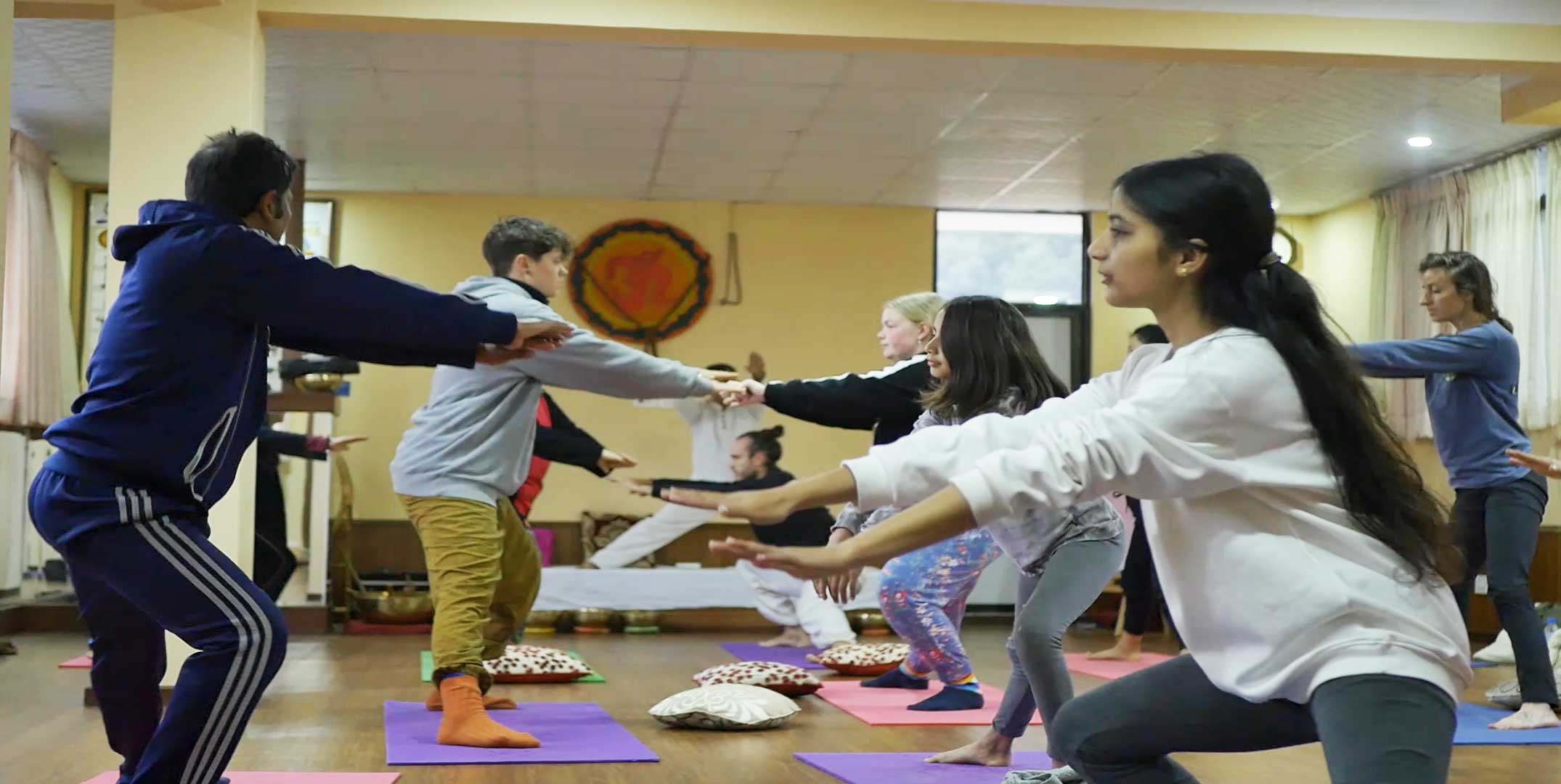
6 Mar 2020 HYN Himalayan Yoga Academy
Vinyasa is a style of yoga characterized by stringing postures together so that you move from one to another, seamlessly, using breath. Commonly referred to as “flow” yoga. It is the breaking down process of the final Posture in sequence. It is the real process of training, but not practice for a regular Yoga Session. More about VINYASA YOGA in Nepal.
Vinyasa Yoga Definition
As with many things in yoga, the definition is dependent on the context and on who you ask. Below are the more common definitions. “The Sanskrit word Vinyasa comes from a prefix VI, which means variation, and a suffix, nyasa, which means‘ within prescribed parameters. Srivatsa Ramaswami, a student of Krishnamacharya for more than thirty years. He goes on to refer to classical yoga, from the Yoga Sutras of Patanjali, for the specific parameters: Steadiness (Sthira); Comfort (Sukha); Smooth and Long Breathing (Prayatna Sithila).
They are all vinyasas, progressive sequences that unfold with an inherent harmony and intelligence. “Vinyasa” is derived from the Sanskrit term nyasa, which means “to place,” and the prefix VI, “in a special way” —as in the arrangement of notes in a raga. The steps along a path to the top of a mountain, or the linking of one asana to the next. In the yoga world, the most common understanding of vinyasa is as a flowing sequence of specific asanas coordinated with the movements of the breath.
The term Vinyasa is derived from vi, meaning “in a special way,” and nyasa, meaning “to place,”. This indicates that we are not “throwing our bodies around” but are bringing consciousness to each movement in each moment.
The word “vinyasa” can be translated as “arranging something specially,” like a yoga pose. In vinyasa yoga classes, we should coordinate movement with breath to flow from one pose to another. Ashtanga Yoga, Jivamukti, Power Yoga, and Prana Flow could all be considered vinyasa yoga. Vinyasa is also the term used to describe a specific sequence of poses, e.g., Chaturanga to Upward-Facing Dog to Downward-Facing Dog, commonly used throughout a vinyasa class.
The variable nature of Vinyasa Yoga helps to develop a more balanced body as well as prevent repetitive motion injuries that can happen if you are always doing the same thing every day.
As a philosophy, Vinyasa recognizes the temporary nature of things. We enter into a posture, are there for a while, and then leave. While Vinyasa, or Vinyasa-Krama, dates back to the Vedic age — the earliest period of yoga thousands of years ago — it referred to a series, or sequence of steps, to make something sacred.
History of Vinyasa Yoga
The great South Indian master Krishnamacharya championed the vinyasa approach as central to the transformative process of yoga. But Krishnamacharya had a broader vision of the meaning of vinyasa than most Western students realize. He not only taught specific asana sequences like those of Jois’s system, but he also saw vinyasa as a method that could be applied to all the aspects of yoga.
In Krishnamacharya’s teachings, the vinyasa method included assessing the needs of the individual student (or group) and then building a complementary, step-by-step practice to meet those needs. Beyond this, Krishnamacharya also emphasized vinyasa as an artful approach to living, a way of applying the skill and awareness of yoga to all the rhythms and sequences of life, including self-care, relationships, work, and personal evolution.
T. Krishnamacharya began the movement practice of Vinyasa and greatly influenced the way yoga is practiced today. Vinyasa connects breath with movement, guiding every action toward what is sacred or most important in our lives. Although Vinyasa Yoga has become one of the most popular forms of yoga worldwide, many people still do not fully understand it.
More about Vinayasa Yoga in Nepal
We offer a variety of yoga styles, including All Levels Vinyasa Yoga, Slow Flow Vinyasa Yoga, Dynamic Flow Vinyasa Yoga, Yoga Fusion (a blend of Yoga and Pilates), Restorative Yoga, and Ashtanga Yoga. This wide range of styles and levels gives you the freedom to explore and choose what suits you best on any given day. When you find the right style and teacher, you build a steady and fulfilling practice. As you establish a routine, you begin to experience the many benefits of consistent yoga. Practice once a week, and you change your mind. Practice three times a week, and you will change your body. To transform your life, practice every day.
Characteristics of Vinyasa Flow Yoga
Vinyasa Yoga connects one posture to the next using the breath. This can be thought of as linking or flowing into postures which is sometimes why it’s called “Flow Yoga”. The opposite of this would be an alignment based class where students engage with a posture, explore it for a period of time and then “break the posture” by coming out.
Vinyasa is synonymous with movement. Moving in and out of postures is the obvious movement but even in stillness Vinyasa is represented by the beat of your heart and inhale / exhale of your breath. Move with breath. Breath initiates the movement of Vinyasas, which is why you’ll hear it referred to as a “breath-synchronized” practice.
Practitioners use Ujjayi Breath as the primary breathing technique. They inhale and exhale rhythmically through the nose, creating a steady and calming flow. This technique produces an overall sensation of relaxation.
Vinyasa practice generates heat and can add a cardiovascular component not always present in other forms of postural practice. The picture below is from a student’s heart rate monitor worn during a regular Vinyasa class I taught.
